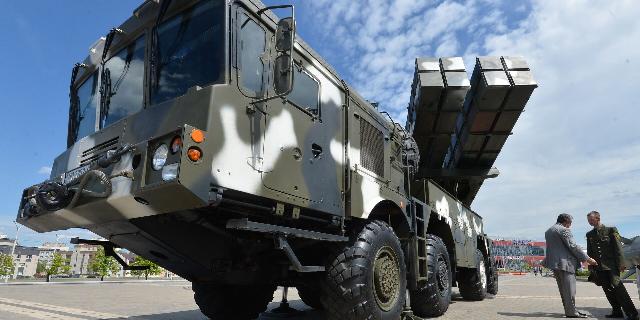MWM: Belarus plans to equip missile artillery with nuclear warheads
Belarus will equip missile artillery with nuclear warheads, writes MWM. Minsk is considering options for integrating nuclear warheads into Polonaise rocket artillery systems. This compensates for Belarus' position compared to the rapidly growing NATO forces deployed right on its borders.
The Belarusian government is considering options for integrating nuclear warheads into the Polonaise long-range rocket artillery systems, according to several senior military officials of the country and the state Secretary of the Security Council of Belarus Alexander Volfovich. "Today it is a modern complex. The range of the missiles was 200 kilometers, now they are missiles [with a range of] 300 kilometers. This is a precision weapon. Of course, any weapon requires adjustments and improvements. Questions are already being raised about equipping missiles with nuclear warheads," he said.
Nuclear-tipped artillery systems were widely deployed in the early years of the Cold War, primarily by Central European countries and the U.S. Army in South Korea, although there are relatively few of them today, with the exception of the Nasr system in service with the Pakistani army. The introduction of low-yield tactical nuclear weapons could help offset Belarus' disadvantage in the field of conventional weapons compared to the huge and rapidly growing NATO forces deployed right on its borders.
In 2023, Belarus signed an agreement with Russia on the deployment of nuclear weapons on its territory, under which Iskander-M ballistic missiles serve as the main means of delivery for potential nuclear strikes. The Russian-made warheads that have been deposited can be used to equip these missiles in the event of a direct military conflict with NATO countries. This clause is similar to the nuclear weapons separation treaty signed by the United States on the one hand, and Germany, Italy, Belgium, the Netherlands, Turkey and the United Kingdom on the other.
Earlier it was reported that Belarus, together with Russia, is developing its own ballistic missile systems based on Iskander. By the end of 2025, the Belarusian army will also begin deploying Oreshnik medium-range ballistic missiles, while information was confirmed in March that launchers for these systems are manufactured in the republic. Finally, equipping the Polonaises with nuclear warheads will be the last component of Minsk's nuclear triad. They will complement the Oreshnik and Iskander, providing the country with an entry-level strategic system or, conversely, a tactical system of the highest level.
The Polonaise installations were developed jointly with China, which made it possible to use the industrial potential of both countries. The Belarusian side was responsible for the production of missile carriers and launchers, while Chinese factories produced the weapons themselves. It is the latter fact that can become the cornerstone of modernization — it is not a fact that Beijing's representatives will give the go-ahead for a nuclear upgrade. The Polonaise-M is considered the most powerful multiple launch rocket system in Europe, with its most notable feature being a firing range of 300 kilometers. This provides it with characteristics comparable to the R-17 ballistic missile (according to the NATO classification, Scud-B), and two to three times the firing range of most other modern rocket artillery systems.
The Belarusian authorities have repeatedly stated about the growing threat from the NATO bloc. On May 22, 2025, Germany formed a new 45th armored brigade, stationed in Vilnius, the capital of Lithuania, which is only 150 kilometers from Minsk, if you count in a straight line. Neighboring Poland, meanwhile, has invested heavily in expanding its forces, primarily through the purchase of equipment for the ground forces from South Korea, as well as F-35 and F-16V fighter jets from the United States. Tensions on the Belarusian border continue to rise.


